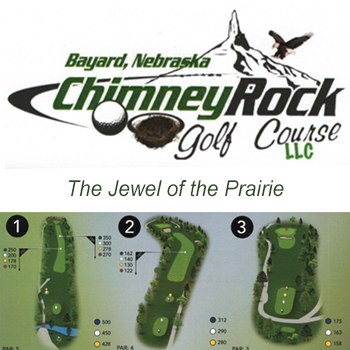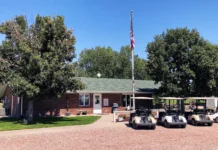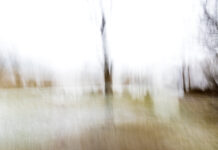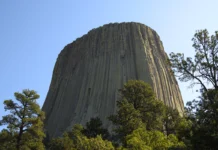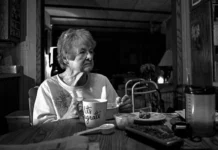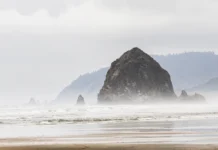| NEBRASKA |
The North Platte River basin is often considered one of the last western frontiers to tourists and visitors arriving in west Nebraska to visit the Oregon-California, Bozeman, and Mormon trails and to take Nebraska’s Archeological Treasure in the deep western heritage found in the North Platte River Valley, and surrounding areas in western Nebraska.
Considerations are not given to the prehistoric occupants of the Great Plains. But, they were here and the first peoples to occupy the Platte River Valley 5,000 years BP in the Middle Lithic Period, the earliest period of human occupation in the Americas.
In 1931 a local Scotts Bluff County amateur archeologist, Thomas L. Green (1884-1954), notified William Duncan Strong (1899–1962) of the University of Nebraska Archeological Survey of the discovery of points, tools, and hammer stones he had found near a butte west of Gering, NE while exploring the area.

Green, the President of Platte Valley State Bank at the time and a successful businessman and community leader in Scotts Bluff County, had taken up archaeology as a hobby and spent his weekends scouting the countryside for Native American artifacts.
As a public figure, Green was active in civic organizations, including the Scottsbluff Chamber of Commerce and the Rotary Club. Still, he devoted most of his energies to promoting local history. He took charge of the Nebraska Chapter of the American Pioneer Trails Association and served on the Nebraska State Historical Society board. An amateur historian, he wrote a handful of articles on forts, trading posts, and buffalo hunting for the society’s quarterly magazine.
Green’s fascination with the frontier led him further and further back in time. According to his account, he had launched his self-directed study of Nebraska’s history with nineteenth-century pioneer farmers, moved next to fur trappers, then continued to sixteenth-century Spanish conquistadors. But what came before recorded history? He wondered. Looking for an answer, he took up archaeology as a hobby and spent weekends scouting the countryside around Scottsbluff.
After notifying Strong about his findings, Green made all the local arrangements for Strong’s brief expedition in 1931. Strong, along with Waldo Rudolph Wedel (1908-1996), Asa A.T. Hill, Green (These four men formed the inner circle of the Nebraska State Archaeological Survey), and others from the Smithsonian Bureau of American Ethnology founded by John Wesley Powell in 1879, began excavations in 1931 at what soon became known as Signal Butte, the oldest American Indian archeological site on the great plains.

Arriving in western Nebraska in 1931, Strong met with Green in Gering, NE, and began their journey toward the dig site west of Robidoux Pass. After arriving at the site, Strong must have started to understand the colossal effort that would have to be undertaken to excavate the top of the butte. Being an adventurous man who enjoyed reading adventure books and western tales, he was not daunted by the 125-foot climb that had to be made to ascend the promontory as its circumference was blocked by 20 to 50-foot escarpments consisting of sand, silt, ash, and limestone on all sides.
Ropes and ladders were used to transport hand tools, screen frames, and essentials for labor which had to be carried to the top on the backs of the work crews. Water had to be hand-delivered to the top of the promontory for digging purposes and to keep the teams hydrated. After a long day of digging, the crews were resupplied, took their meals, and camped at an encampment at the bottom of the butte where the land was flat near a field road that led to the base of the promontory from a county road about 2 miles to the north.
Strong led the investigations of the butte in 1931 and briefly again in 1932 on a return visit to close out his research from the previous year. While digging in the heat of the Nebraska day using screens, shovels, hand tools, and brush, artifacts were unearthed after cutting a 13-foot vertical cross-section in the west side of the top of the butte, which revealed three different levels of artifacts, including signs of repeated habitation. Before leaving to return to Lincoln, NE, after two weeks, Strong, a confident and driven man, was inclined to leave his work tools, shovels, and screens on top of the butte, believing that another company would return to the promontory and continue further excavations.
It wasn’t until after the end of WWII that a Smithsonian Institute Archeological Survey crew returned to the butte and found the tools that Strong had left behind. The tools, screens, shovels, brushes, and other accompaniments from the first expedition to the butte are still there.
Strong was known for comparing an archaeological site to a document which is how he treated the dig site at Single Butte. In his article “Signal Butte, a Prehistoric Narrative on the High Plains.” he described stratigraphy layers as “chapters in a book” relating the “story of early man in the western plains.” in each deepening layer of matrix.
Materials and artifacts collected at Signal Butte were some of the first radiocarbon-dated.
![South side of Signal Butte (1931) – [Nebraska State Historical Society Archeology 25SF1-51]. PHOTOGRAPH BY C.L DOW](https://wyobraskamagazine.com/wp-content/uploads/2020/02/signal-butte-photo1.jpg)
Along with these verbal images, Strong portrayed archaeology as historical scholarship in three dimensions through visual images. In a photograph of Signal Butte, he stated that “the clean, straight walls of the excavation trench recalled an aisle in a library.” Later, in Nebraska Archeology, he carefully detailed the stratigraphic techniques used to excavate this site, layer by layer, square by square.
After extensive digging, screening, washing, and examination on the site using these techniques as a guide, Strong’s crew discovered that about six inches below the grassroots, the first three- to a six-inch layer of artifacts (Ceramic Period) was found to contain relics of the Dismal River and Upper Republican cultures. This six-inch layer showed fire pits, storage pits, scrapers, knives, drills, projectile points, animal bones, pottery shards, and mussel shells.
Digging further, Strong’s crews arrived at the second level (Intermediate Lithic Period), described as Pre-Woodland, 1500 years BP, where many delicate and beautifully made points, including quartz crystal points, were discovered.
The lowest level, about 2 ½ feet, showed evidence of an organized hunting complex during the early Lithic Period (the earliest period of human occupation in the Americas), 5,000 to 3,000 BC. The artifacts were found in a layer 12 to 32 inches thick, resting on a gravel bed.

It was determined that Single Butte represents an area used repeatedly, passed down, across multiple traditions and cultures over 5000 years. First, by Palio-Indians and led to the Dismal River Culture (forefathers of the plains Apache) and tribes, including the Arapahoe, Pawnee, Cheyenne, and Sioux.
Evidence shows that they all used the area as a hunting ground, hunting camp, and workshops where meat and plants were processed.
If not for the likes of Thomas Green, who contributed a great deal of information, time, money, and energy to discovering Palio and Modern American Indian history in Wyobraska, Signal Butte would be another obscure yet picturesque butte rising out of the great plans. Green remained an influential figure in the community until he died in 1954. It’s been noted that after Thomas Green assisted W.D. Strong with the excavation(s) of Signal Butte, he gave a speech to the Scottsbluff Chapter of the Nebraska Historical Society in which he eloquently explained the deep appeal of local history stating that in contrast to the remoteness of world history, local history was “very real and personal and living.”
He told his Scottsbluff neighbors that it offered a sense of connectedness because it showed that “you are dwelling where others have dwelt before you back through long ages. And where others will dwell after you are gone through ages to come. Then, realizing that you “are a tiny link, the story became “really and truly your own.”
Green’s legacy is often forgotten or unknown, but his contributions have paved the way for a better understanding of WyoBraska’s history and future.
||| FINDING SIGNAL BUTTE
Signal Butte is a Smithsonian trinomial (25SF1) and is protected as a National Historical Landmark (1961). The site is not open to the public.
Signal Butte promontory is on privately owned land and is not accessible to the public. It can be viewed by taking a 25-minute drive from Scottsbluff/Gering, NE.
Begin driving south on HWY 71 out of Gering, NE to Robidoux Road (about one mile and a half south of Old Oregon Trail Road).
Turn right onto Robidoux Road (dirt road) and drive west past CR 17.
Continue west, passing Fleming Dunn’s gravesite faux marker until you reach the top of Robidoux Pass.
Continue following the road to the left around the ridgeline.
Once you’ve reached the top of the hill, look to the right (west). The promontory will rise out of the landscape about a mile south of the road in the distance.
To get closer, continue to the cattle guard. Cross it and immediately turn right (you’re still on Robidoux Road).
Drive about three miles. You will cross about three cattle guards, so watch your speed.
The promontory will continue to get more prominent on the horizon to the left. Drive until you can see the north face of Signal Butte about 1 mile due south (left) on fenced ranch land.
Do not cross the fence.
| REFERENCES
The information in this article has been compiled from the following:
- Smithsonian Institute Archives
- North Platte Valley Museum, now Legacy of the Plains Museum, including the Paul Henderson collection.
- The History of Scotts Bluff Nebraska (Archeology), and Nebraska State Historical Society’s “Exploring Nebraska Archeology: High Plains Archeology.”
- Photograph of Signal Butte (1934) : Smithsonian Institution Archives, SIA Acc. 12-492 [SIA2012-6561], Created by United States National Museum, “Signal Butte, Nebraska, the Oldest Indian Site on the Great Plains”, SIA2012-6561
- Frontier Stories: Reading and Writing Plains Archaeology by Melody Herr
- The University of Nebraska Archeology Dept.
- Legacy of the Plains Museum, Gering, NE | E. S. Wood collection of Indian projectile points and other artifacts, found in Scotts Bluff County, Nebraska.





